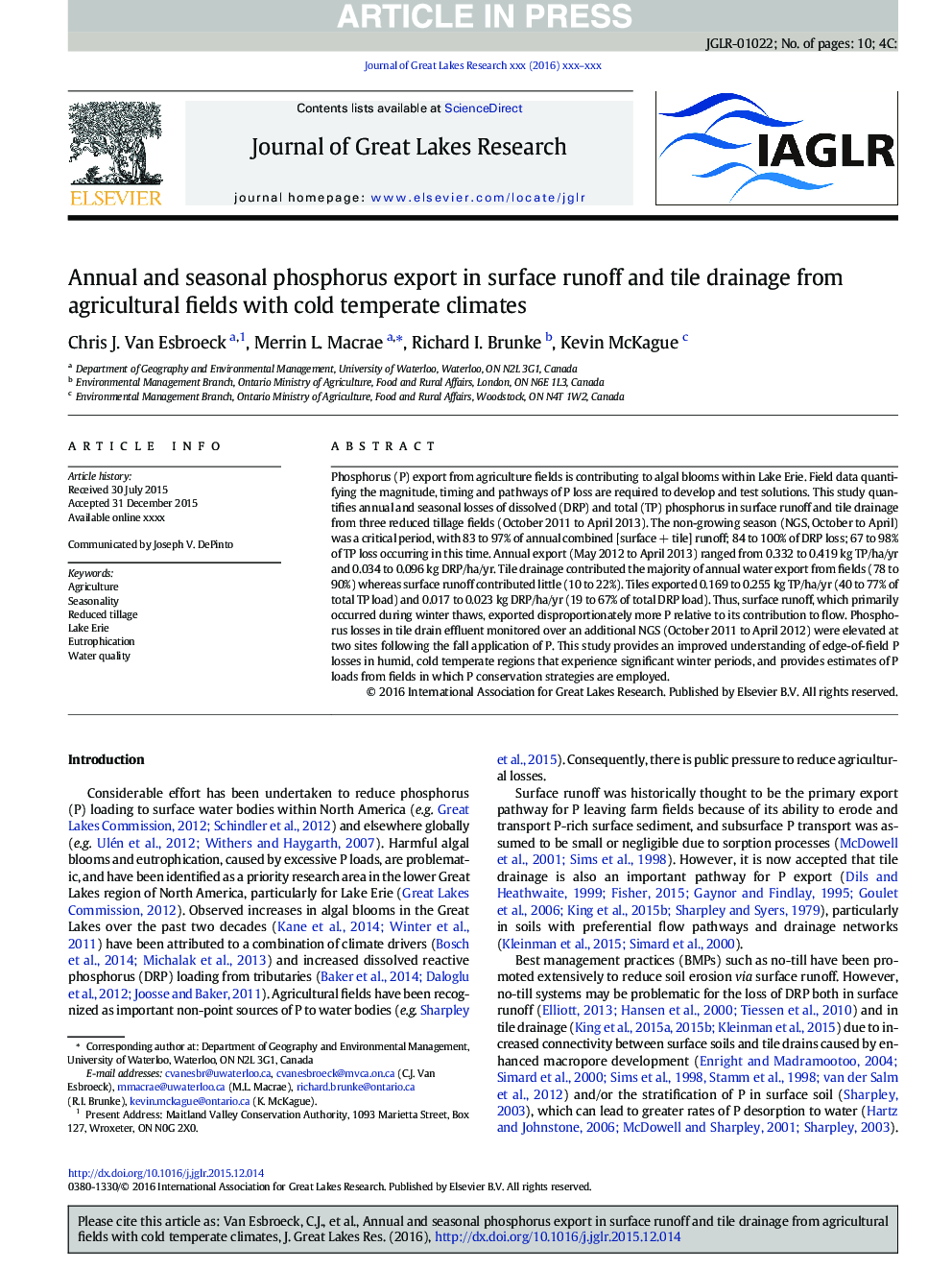| Article ID | Journal | Published Year | Pages | File Type |
|---|---|---|---|---|
| 5744698 | Journal of Great Lakes Research | 2016 | 10 Pages |
Abstract
Phosphorus (P) export from agriculture fields is contributing to algal blooms within Lake Erie. Field data quantifying the magnitude, timing and pathways of P loss are required to develop and test solutions. This study quantifies annual and seasonal losses of dissolved (DRP) and total (TP) phosphorus in surface runoff and tile drainage from three reduced tillage fields (October 2011 to April 2013). The non-growing season (NGS, October to April) was a critical period, with 83 to 97% of annual combined [surface + tile] runoff; 84 to 100% of DRP loss; 67 to 98% of TP loss occurring in this time. Annual export (May 2012 to April 2013) ranged from 0.332 to 0.419Â kg TP/ha/yr and 0.034 to 0.096Â kg DRP/ha/yr. Tile drainage contributed the majority of annual water export from fields (78 to 90%) whereas surface runoff contributed little (10 to 22%). Tiles exported 0.169 to 0.255Â kg TP/ha/yr (40 to 77% of total TP load) and 0.017 to 0.023Â kg DRP/ha/yr (19 to 67% of total DRP load). Thus, surface runoff, which primarily occurred during winter thaws, exported disproportionately more P relative to its contribution to flow. Phosphorus losses in tile drain effluent monitored over an additional NGS (October 2011 to April 2012) were elevated at two sites following the fall application of P. This study provides an improved understanding of edge-of-field P losses in humid, cold temperate regions that experience significant winter periods, and provides estimates of P loads from fields in which P conservation strategies are employed.
Related Topics
Physical Sciences and Engineering
Earth and Planetary Sciences
Earth and Planetary Sciences (General)
Authors
Chris J. Van Esbroeck, Merrin L. Macrae, Richard I. Brunke, Kevin McKague,
